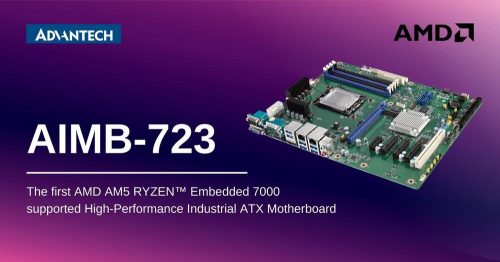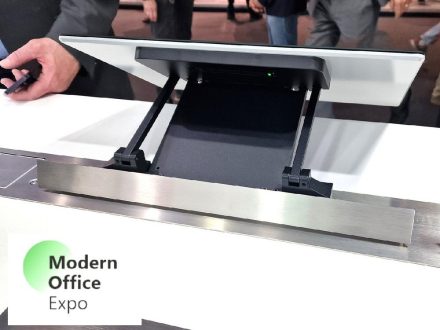
Thermal Throttling in PCle SSDs
Most PCIe (Peripheral Component Interconnect express – Solid State Drive) SSDs use a very rudimentary thermal throttling algorithm. By lowering and raising the system frequencies, the temperature is controlled. For example, when the temperature reaches +85°C, the flash clock frequency is lowered to a predefined speed to allow the system to cool down. Once the temperature drops to a certain level, the speed is increased again accordingly. This method is well suited for consumer applications. However, it is not suitable for industrial applications.
Industrial applications require a stable transmission speed. Traditional thermal throttling methods can sometimes cause the speed to jump up or down in rapid succession. Stable speeds and sophisticated thermal throttling algorithms are important for industrial use cases where devices have a specific task that repeats over and over, and sudden major speed reductions are unacceptable.
Applications include smart security applications where large video and image files need to be written and read continuously and at high speed to facilitate facial recognition and processing of high-value security footage.
For industrial applications, the fastest speeds don’t always matter. Instead, developers prefer constant speeds that they can rely on. It is better if a process is always completed in 10 seconds than if it sometimes takes only 5 seconds and sometimes 20 seconds. The reason is that in industrial environments, individual read/write operations may be part of a series of actions, and there may be other processes that need information on when read/write operations will be complete so they are ready for the next step.
Innodisk’s thermal throttling technology uses an innovative algorithm to achieve more precise temperature control. The algorithm calculates the difference between the current temperature and the target temperature and then increases or decreases the number of commands sent to the NAND flash. As a result, a more stable temperature is achieved. In addition, unlike traditional thermal throttling technology, Innodisk’s algorithm does not reduce speed immediately when the temperature threshold is exceeded, but instead reduces speed gently over time. This results in fewer unpredictable speed fluctuations.
Innodisk’s firmware development team found that in addition to frequency reduction, controlling the number of commands sent to the NAND flash can also cause cooling. For this reason, the newly developed firmware is controlled by the difference between the actual and target temperatures. For example, if the target temperature is set to +110°C and the actual temperature of the SSD is +80°C, the drive can increase the commands sent to the NAND flash, resulting in an increase in temperature and speed. Unlike the old thermal throttling mechanism, Innodisk’s firmware has countless deceleration and acceleration points so that a smooth slowdown can be achieved when the temperature increases. This thermal throttling algorithm is only possible with newer controllers because they have an independent engine to control the number of commands sent to the NAND flash.
No setup is required to use the new thermal throttling algorithm. All Innodisk PCIe SSDs that support the new firmware are already preconfigured with this technology. The product lines M.2 (P80) 4TG2-P with PCIe Gen. IVx4, NVMe 1.4 and M.2 (P80) 3TG6-P with PCIe Gen. III x4, NVMe 1.3 feature very good data transfer speeds with stable, sustained performance and a heat-spreading design. Both lines feature LDPC ECC engine (low-density parity-check error correction codes).
Innodisk’s thermal throttling algorithm is well suited for applications with high speed and temperature requirements, such as 5G and AIoT networks and other industrial applications. The algorithm is also suitable for applications in harsh environments where uncontrollable speed fluctuations and inconsistencies must not have an impact.
Thermal throttling protects components such as CPU, GPU and memory modules from damage due to high temperatures. In most PCIe SSDs, the flash clock frequency is lowered to a predefined speed to allow the system to cool down. Once the target temperature is reached, the speed is increased again accordingly. This method is suitable for consumer applications and is not suitable for industrial applications.
Innodisk’s thermal throttling technology calculates the difference between the current temperature and the target temperature and then increases or decreases the number of commands sent to the NAND flash. As a result, a stable temperature is achieved. In addition, unlike traditional thermal throttling technology, Innodisk’s algorithm does not reduce speed immediately when the temperature threshold is exceeded, but instead reduces speed gently over time. This results in fewer unpredictable speed fluctuations. No setup is required to use the throttling algorithm, as all Innodisk PCIe SSDs come pre-configured with this technology.
#Innodisk #Throttling #PCleSSDs
Innodisk Europe B.V.
Pisanostraat 57
NL5623CB Eindhoven
Telefon: +49 (152) 5100 6027
http://www.innodisk.com/
Marcom360
Telefon: +49 (7083) 933745
E-Mail: edgar.huber@marcom360.de
Innodisk Europe B.V.
Telefon: +49 (152) 5100-6027
E-Mail: Patrik_stocks@innodisk.com
![]()




